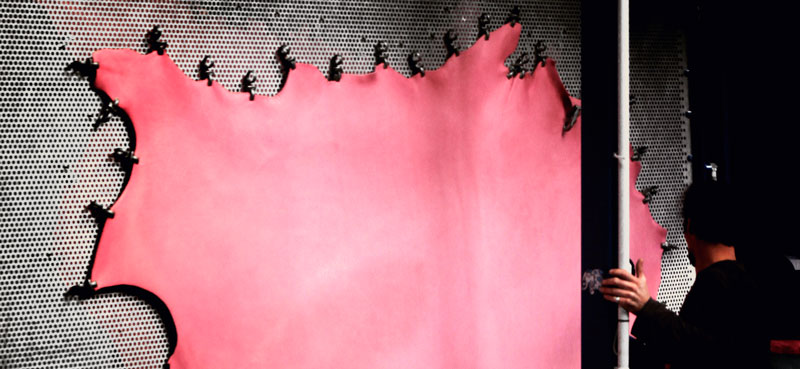
© Carriat
For further information on colleges, training courses, and diplomas in the area of leather, please visit (in French):
http://www.lemondeducuir.org/guide/diplome
Jobs in the tanning industry can be split into 3 categories:

© Carriat
For further information on colleges, training courses, and diplomas in the area of leather, please visit (in French):
http://www.lemondeducuir.org/guide/diplome
Jobs in the tanning industry can be split into 3 categories:
The grader-sorter examines and grades raw hides, at the slaughterhouse, during the curing process, at hide merchants’ premises and when hides arrive at the tannery. He selects these hides by considering their quality and future end-use, against criteria of thickness and market value (quality/listed prices).
The beamhouse operator carries out a whole series of operations to prepare animal hides and skins for tanning. The purpose of these mechanised operations, which involve both chemical and mechanical processing, is to remove hairs and flesh.
The tanning operator converts the hides into leather via various chemical treatment operations.
The leather finishing operator (colours & effects) endows hides and skins with their different appearances and colours, using a variety of mechanised operations.
The finished leather grader-sorter examines and grades leathers according to their quality (texture, absence of visible defects, fineness, colour), their thickness, size, end-use (apparel, footwear, leather goods, furnishings) and according to the orders placed by customers.
Working with the company’s various departments, the Engineering and Design Manager performs and coordinates technical research relating to the creation of new designs before they enter mass production.
The Research & Development Manager works on projects involving research into or the creation of new materials, substances, products and manufacturing processes.
The Workshop Manager oversees manufacturing activities in accordance with health and safety rules, environmental rules and production imperatives.
He organises and oversees the workshop’s procurement activities and provides technical support to operators.
The Product Development Manager oversees the process of putting new designs into production, using a technical data sheet compiled by the Engineering and Design Department. He checks the production costs and the product specifications, and oversees the manufacturing process.
The Production Manager organises the production chain, and ensures that the desired product quality is being achieved and that manufacturing techniques are being adhered to, at the production costs calculated in advance. He intervenes with the creative team on technical issues.
Using the style guidelines laid down by the designer, the Fashion Collection Manager guides and coordinates work, liaising between the fashion coordinator, manufacturing workshops and product managers, from the fashion trends stage through to the time the collection is presented to buyers.
The fashion coordinator designs collections for the forthcoming seasons (spring-summer/autumn-winter). Anticipation is therefore a critical aspect of his remit. He draws his inspiration from the prevailing climate, changes in society and fashion trends, and designs his collections of leather apparel, leather goods, footwear and other accessories in the light of these.
The quality controller checks the compliance of all items that he examines, and establishes inspection systems for products at all stages of manufacture. He intervenes during the production process and again at the time of delivery, to ensure that the products supplied correspond to their agreed contract specifications. The quality controller also checks that products made abroad comply with legislation, safety standards and other imperatives.
The Environmental Manager draws up and coordinates the company’s environmental policy, which is applied to manufacturing techniques, product design and communication with the public.
The buyer seeks out and selects suppliers and products, then proceeds to negotiate purchase contracts with these suppliers, based on product quality, costs, lead-time for manufacture and delivery, and payment terms.
The Export Manager manages an Export team (which is specialised in international trade) and develops his company’s sales at international level.
The sales representative’s job is to increase the company’s turnover.
He therefore seeks to win new customers, as well as maintaining a steady business relationship with his established customers, for whom he acts in an advisory capacity. He understands his customers’ needs and expectations, and is able to meet these by offering suitable products and services.
The supply chain manager defines how the logistics chain (transportation and delivery of goods) is organised. He puts in place management tools to monitor product flows between the various parties involved in the logistics chain (producers, carriers, distributors, etc.), so that improvements can be made (in terms of quality, profitability, lead-times and safety).